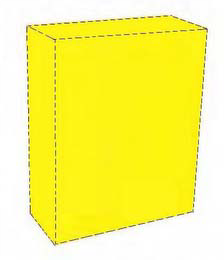 Recent efforts by General Mills to assert rights in the color yellow in connection with its CHEERIOS® breakfast cereal boxes have brought the issue of how color can function as a trademark into focus once again. Since at least as early as the 1980’s, U.S. trademark law has recognized that color can function as a trademark and is thus eligible for trademark protection. In its 1995 Qualitex decision, the Supreme Court definitively agreed, concluding that “sometimes, a color will meet ordinary legal trademark requirements. And, when it does so, no special legal rule prevents color alone from serving as a trademark.” As with all legal statements, the key is in the word “sometimes.” How Can Color Become a Trademark? Acquiring trademark rights in a color is not an easy task. A company must show that the color has become distinctive of its goods in commerce, and that the color does not serve any other significant function. Here are some well-known examples of companies who have successfully established trademark rights in a color: Owens-Corning Pink, Qualitex green-gold, Tiffany Blue, Barbie Pink, Wiffle Ball Bat Yellow, UPS Brown, 3M Canary Yellow, Target Red, Coca Cola Red, Christian Louboutin (red outsoles on shoes), and The Home Depot Orange. For a color to function as a trademark, customers must come to treat a particular color on a product or its packaging as signifying a brand. Taking Owens-Corning Pink as an example, the pink coloring of its insulating material seems unusual in context, and the particular hue has no other significant function. That color has come to identify and distinguish the insulation products – to indicate their source. In this instance, the color has acquired “secondary meaning,” where, in the minds of the public, the primary significance of the color is to identify the source of the product rather than the product itself. Limits to Color as a Trademark Against this backdrop, General Mills recently attempted to register the color yellow on packages of “toroidal” (ring or doughnut-shaped) oat-based breakfast cereal, the company’s CHEERIOS® cereal. The trademark application looked like this: General Mills described their trademark as consisting “of the color yellow appearing as the predominant uniform background color on product packaging for the goods. The dotted outline of the packaging shows the position of the mark and is not claimed as part of the mark.” The U.S. Trademark Office refused the trademark application, and General Mills appealed to the Trademark Trial and Appeal Board (TTAB). The TTAB agreed with the USPTO and rejected General Mills’ bid to register yellow for its CHEERIOS® cereal. In deciding the case, the Board conceded that “by their nature color marks carry a difficult burden in demonstrating distinctiveness and trademark character.” The record showed that General Mills had begun using the color yellow on its CHEERIOS® cereal boxes at least as early as 1944. The company introduced evidence that it had expended over $1 billion in marketing in a single decade, and that sales of CHEERIOS® cereal exceeded $4 billion in that same period (1995 to 2015). In looking at General Mills’ trademark application, the Board was influenced by the existence of several other companies who use yellow colored cereal packaging (boxes and bags) for similarly-shaped, oat-based cereals, including some of General Mills’ competitors. The Board concluded, “The presence of products of this type in the marketplace interferes with the development among relevant customers of a perception that the color yellow on packaging indicates that Applicant is the source of the goods (or that there is any single source of such goods)." Think about the cereal aisle in your local grocery store. When you turn down this aisle, you are often confronted with a rainbow of brightly colored packaging, for a large number of different cereals. Several of these boxes are yellow. The Board found that customers are accustomed to seeing numerous brands from different sources offered in yellow packaging and are likely to view yellow packaging simply as eye-catching ornamentation customarily used for the packaging of breakfast cereals generally. The Board also looked at the industry practice of ornamenting breakfast cereal boxes with bold graphic designs and prominent word marks (in addition to bright background colors). Looking at General Mills’ cereal packaging generally, the Board found that customers do not perceive the color yellow alone indicate the source of General Mills’ breakfast cereal. The CHEERIOS® “yellow box” case demonstrates the difficulties in protecting trademark rights in a color per se. This case presents a refinement in color trademark law, as well as guidance for companies interested in non-traditional trademark protection for their valuable brands.
0 Comments
Your comment will be posted after it is approved.
Leave a Reply. |
AuthorKarrie Weaver practices intellectual property, trademark, patent, and trade secret law. Archives
February 2021
Categories |
612.386.0565
Copyright 2021. Weaver Legal and Consulting LLC. | All rights reserved.
Website by RyTech, LLC
Copyright 2021. Weaver Legal and Consulting LLC. | All rights reserved.
Website by RyTech, LLC

 RSS Feed
RSS Feed